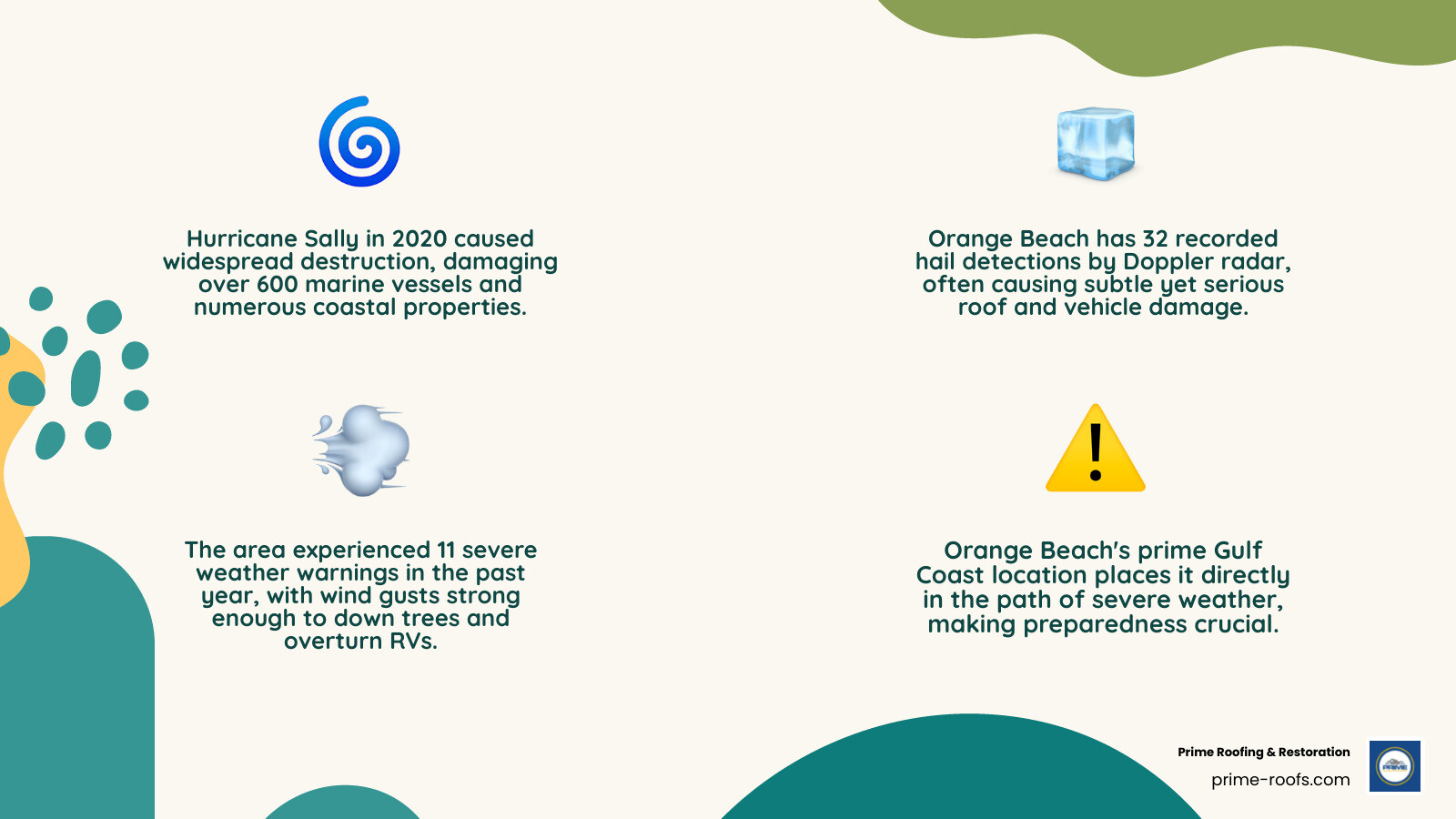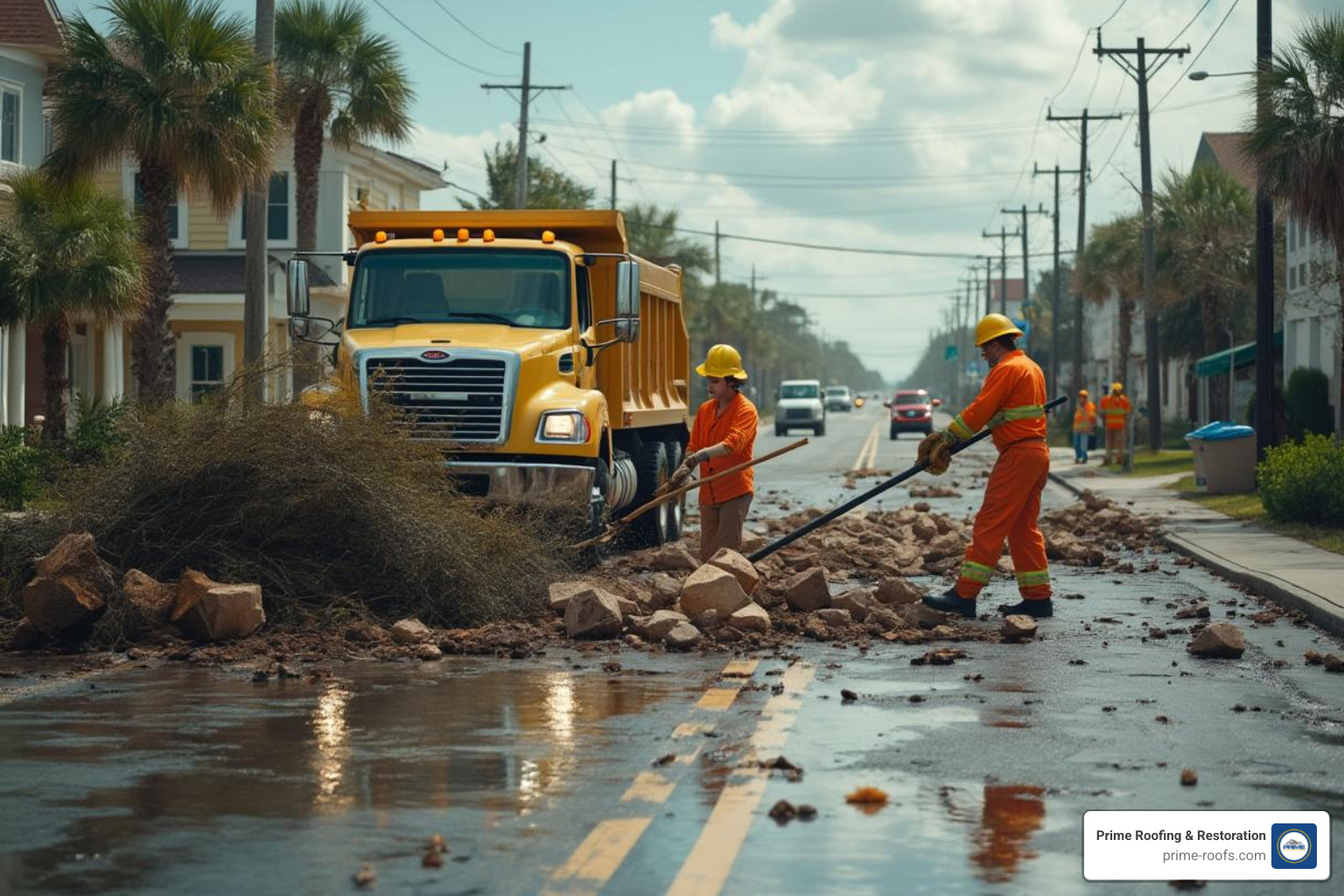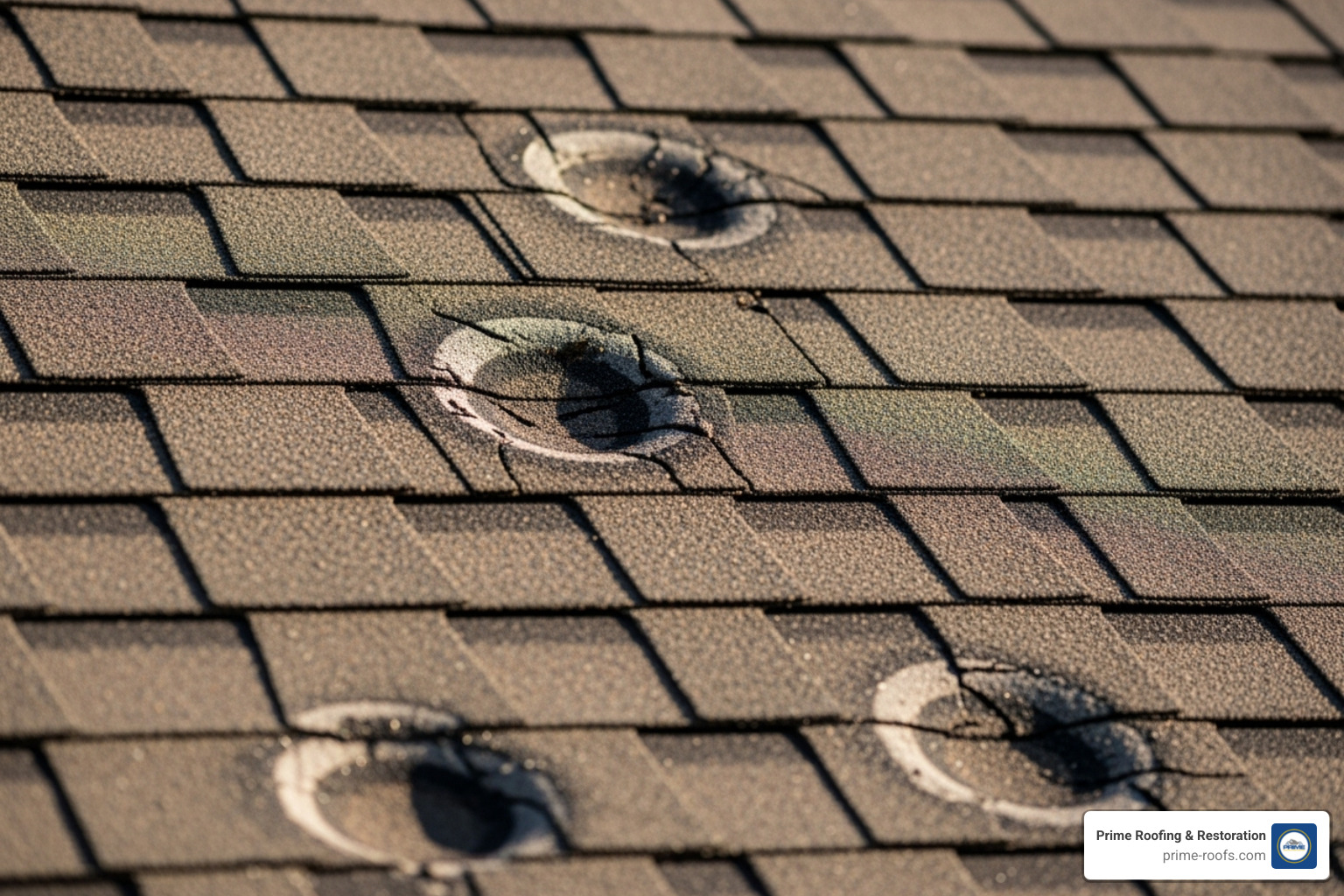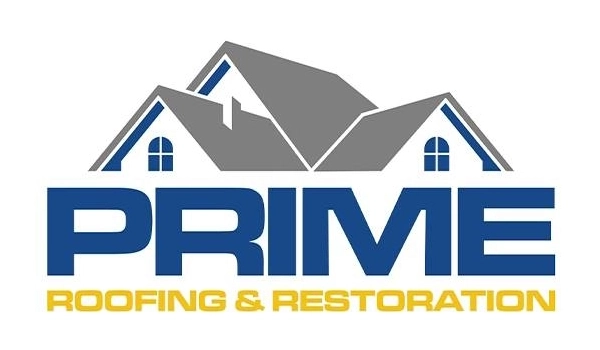Understanding Orange Beach Storm Damage: A Case Study
Orange Beach storm damage is a significant concern for residents and business owners alike. This beautiful coastal city, while a paradise for many, sits directly in the path of severe weather events originating from the Gulf of Mexico. If you ever need a trusted roofing contractor for storm damage, knowing who to call before the clouds gather is half the battle. As a leading Gulf Coast roofing company, we know that understanding the typical types of storm damage here is crucial for preparedness and effective recovery.
Here’s a quick look at the most common types of storm damage in Orange Beach:
- Hurricanes: Bring widespread destruction from high winds, storm surge, and heavy rainfall. Hurricane Sally in 2020 caused extensive damage to over 600 marine vessels and coastal properties.
- Hail: Frequent occurrences, with Doppler radar detecting hail at or near Orange Beach 32 times. Hail can cause subtle but serious damage to roofs and vehicles.
- Severe Winds: Common during thunderstorms, with gusts strong enough to overturn RVs and down trees. The area has been under severe weather warnings 11 times in the last year.
For homeowners and businesses, having reliable roofing and exterior restoration experts is essential when facing these challenges. This guide dives into real-world examples to help you understand Orange Beach’s unique storm impacts.
At Prime Roofing & Restoration, we’ve spent years helping Orange Beach residents steer the complexities of Orange Beach storm damage and restore their properties. Our team is deeply familiar with the specific challenges storms pose to Gulf Coast structures.

Case Study: The Unforgettable Impact of Hurricane Sally
When discussing significant recent Orange Beach storm damage, Hurricane Sally is a primary example. This powerful storm, which made landfall in September 2020, demonstrated the unpredictable nature of severe weather. What made Sally so impactful was not just its strength—with winds reaching 110 mph—but its unusual and erratic path.
Sally defied forecasts by slowing considerably as it approached the coast, moving at an agonizingly slow pace. This prolonged the area’s exposure to its destructive forces, including relentless winds, torrential rainfall, and a significant storm surge.
Although officially classified as a Category 2 hurricane at landfall, the extensive destruction led many local officials and residents to feel its impact was more akin to a Category 3 storm. The slow movement amplified its power, causing Orange Beach storm damage that felt far more severe than its category might suggest. This illustrates that a hurricane’s impact is determined not just by its category, but also by its speed, size, and precise path.
The Devastation to Boats and Marinas
The Road to Recovery: How Orange Beach Responded

The aftermath of Hurricane Sally tested the resolve of the Orange Beach community. The immense volume of debris, particularly from damaged and displaced boats, presented an unprecedented challenge. The city and its residents responded with a massive and expensive cleanup operation, demonstrating remarkable coordination and a shared commitment to recovery.
The city’s efforts to manage storm debris, especially the wrecked vessels, were monumental. The City of Orange Beach spent nearly a million dollars on boat removal alone, a figure that highlights the scale of the task. The logistics of recovering and disposing of 600 to 800 boats—some sunk, others washed ashore in various locations—were incredibly complex.
The city also had to manage 22 “mystery boats,” vessels found without an immediately identifiable owner, the largest of which was a 55-foot Hatteras. A system was quickly established to handle these unclaimed boats, with the city planning to seek reimbursement from owners once identified. Impressively, the majority of these damaged vessels were moved within 60 days of the storm. This rapid response was crucial for public safety, navigation, and preventing environmental pollution from fuel and other fluids.
What to Do Immediately After a Storm
When a powerful storm like Sally passes, knowing the first steps to take is critical. These actions ensure your safety and lay the groundwork for a smooth property recovery.
Here’s what you should do right away:
- Safety First: Your well-being and that of your family are the top priority. Before anything else, check for hazards like downed power lines, gas leaks, or structural instability in your home. If you are unsure about safety, stay away and contact emergency services.
- Damage Assessment (from a safe distance): Once it is completely safe, begin a careful inspection of your property. Look for obvious signs of Orange Beach storm damage to your roof, siding, windows, and any flooded areas.
- Photo and Video Documentation: This step is extremely important. Use your phone to take extensive photos and videos of all damage before beginning any cleanup or repairs. Document everything, from a single missing shingle to a destroyed fence. This visual evidence is invaluable for your insurance claim.
- Temporary Repairs: If it is safe to do so, make temporary repairs to prevent further damage. This could involve covering a hole in your roof with a tarp or boarding up a broken window. Keep all receipts for materials purchased for these temporary fixes.
- Contacting Insurance: Notify your insurance company as soon as possible. The sooner you report the damage, the sooner your claim can be processed. Have your policy number and other relevant documents ready.
It is vital for property owners to understand these initial steps. They are foundational for a successful recovery, from ensuring safety to documenting every detail. For more information, our company has prepared a helpful guide on what to do after a storm damages your roof. A proactive approach can make the entire recovery process significantly smoother and less stressful.
Beyond Hurricanes: Other Threats Causing Orange Beach Storm Damage
While major hurricanes like Sally capture headlines with widespread devastation, the story of Orange Beach storm damage includes other significant weather threats. The coastal community is frequently tested by severe thunderstorms that bring high winds and hail. These common events contribute significantly to the ongoing risk that local properties face.
The Hidden Danger of Hail Damage

One of the most deceptive causes of Orange Beach storm damage is hail. While less dramatic than a hurricane, hail can inflict serious, subtle damage to a roof that may not be immediately apparent. This hidden damage can lead to significant leaks months after the storm has passed.
Data shows the frequency of this threat: Doppler radar has detected hail near Orange Beach on 32 separate occasions. When hail strikes asphalt shingles, it can dislodge the protective granules, exposing the underlying material to the sun’s UV rays and accelerating the roof’s aging process. Hail can also cause cracks, bruises, or punctures, creating entry points for water.
Beyond roofs, hail can dent siding, damage gutters, shatter windows, and harm vehicles. Since hail damage is often difficult to spot from the ground, a professional inspection is crucial. Learning how to spot roof hail damage early can prevent more extensive and costly repairs later.
Understanding the Risks of Severe Thunderstorm Winds
In addition to hail, strong thunderstorm winds are another frequent cause of Orange Beach storm damage. While not hurricane-force, these winds are powerful enough to create significant problems for homeowners. In the past year alone, the Orange Beach area was placed under severe weather warnings 11 times, indicating the regularity of this risk.
Wind gusts have been reported at 71 mph (62 knots) in the region, a speed capable of causing damage. Winds this strong can lift and remove shingles, tear siding from a home, and place immense stress on a property’s entire structure.
The real-world impacts are evident in reports of overturned RVs in nearby Gulf Shores and toppled trees in Orange Beach. These events highlight the constant threat that severe winds pose. For this reason, having reliable roofers in Orange Beach, AL available is essential. When high winds occur, a trusted team is needed to assess and repair any damage quickly and effectively.
Staying Prepared: Orange Beach’s Approach to Severe Weather
Living in a coastal community like Orange Beach requires a proactive approach to severe weather. The City of Orange Beach and Baldwin County work diligently to keep residents and visitors safe and informed, recognizing the area’s vulnerability to hurricanes and intense thunderstorms. This commitment to preparedness is a cornerstone of the community’s safety strategy, emphasizing personal responsibility and the importance of having a plan before a storm approaches.
For example, when Hurricane Helene was active in the Gulf, officials in Orange Beach and Gulf Shores promptly issued double red flag warnings for the beaches, even though the storm was not a direct threat. This signal indicates extreme danger from surf and rip currents, closing the water to the public. This type of proactive communication, often guided by the National Weather Service of Mobile, helps everyone understand how even distant storms can create hazardous local conditions. The city consistently advises checking daily beach conditions and understanding the flag warning system. Daily beach reports are also available by texting ALBEACHES to 888777. This multi-layered approach to communication is vital in a region prone to unpredictable weather.
Key Resources for Residents and Visitors
Staying informed and prepared is essential for anyone in a coastal community like Orange Beach. It is important to use available resources and have a solid plan in place well before a storm arrives.
First, sign up for local emergency alerts. This provides a direct line to critical information. Visit www.alertbaldwin.com/ to receive timely notifications about severe weather, evacuation orders, and other emergencies. Next, take time to know your risks. Understand your property’s location, your designated evacuation zone, and potential evacuation routes. This knowledge is critical for making fast, informed decisions.
It is also wise to gather your supplies. Assemble an emergency kit that can sustain your household for at least five days, including food, water, medications, pet supplies, and important documents. For weather updates, always monitor official sources. Rely on experts like the National Hurricane Center and the National Weather Service of Mobile for accurate, up-to-the-minute information, and avoid relying on social media rumors during a storm.
Pay attention to the beach flag system. These flags provide vital safety information. Double red flags, for instance, mean the water is closed to the public due to dangerous conditions like strong rip currents. Daily beach reports can be received by texting ALBEACHES to 888777. Finally, develop an emergency plan for your family. Ensure everyone knows how to contact one another and where to meet in case of an evacuation. This is also a good time to review important documents and insurance policies, including confirming flood insurance coverage if necessary. For more detailed guidance, the federal government’s comprehensive guide at Ready.gov/hurricanes offers invaluable advice on everything from building a kit to securing your home.
Being prepared isn’t just about battening down the hatches; it’s about having a clear, actionable plan that keeps you and your loved ones safe.
Navigating the Aftermath: Insurance and Repairs
When the clouds finally part, a new challenge begins: getting your home and life back to normal. The process can feel overwhelming, but knowing what to expect and having a trusted contractor in your corner will keep things moving in the right direction.
Your homeowner’s policy is your biggest ally after Orange Beach storm damage, so become familiar with it before you ever need to file a claim. Understanding coverage limits, deductibles, and exclusions ahead of time prevents surprises later.
Your Guide to Handling Orange Beach Storm Damage Insurance Claims
- Thoroughly document the damage – Use the photos and videos you captured right after the storm. The more detail you provide, the stronger your claim.
- Report the loss promptly – Contact your insurance carrier as soon as it’s safe. Early reporting helps move your claim to the front of the line.
- Be present for the adjuster’s visit – Walk them through every area you documented so nothing is missed.
- Get detailed contractor estimates – Prime Roofing & Restoration supplies comprehensive, easy-to-read estimates that spell out materials, labor, and any code upgrades required for a proper repair.
- Review the settlement carefully – Compare the carrier’s offer with your contractor’s estimate and ask questions about any discrepancies. Our team is experienced at working directly with adjusters to be sure all legitimate damage is covered.
By following these steps—and partnering with a contractor who understands both construction and the insurance process—you’ll greatly increase the odds of receiving a fair settlement and getting your property fully restored.
Conclusion: Building a More Resilient Orange Beach
From Hurricane Sally’s unforgettable strike to the surprise punch of hail or straight-line winds, Orange Beach storm damage is a reality our community faces year after year. Yet every event also tells a story of resilience. Neighbors help neighbors, local officials act quickly, and trusted professionals step in to repair what was lost.
For homeowners, preparedness makes all the difference. A post-storm inspection by Prime Roofing & Restoration can uncover hidden issues—like hail bruises or wind-lifted shingles—before they turn into expensive leaks. We provide free estimates and are available 24/7. Call (205) 661-8190 now to schedule your free inspection and get a no-obligation estimate.



